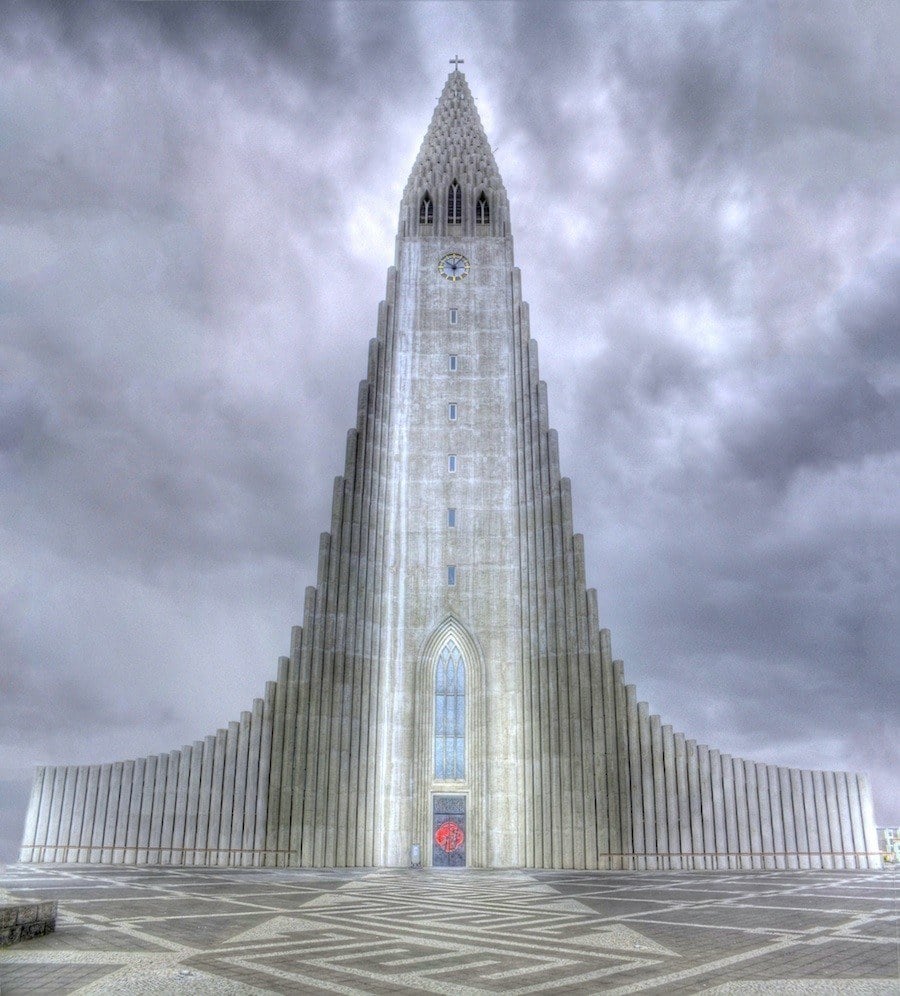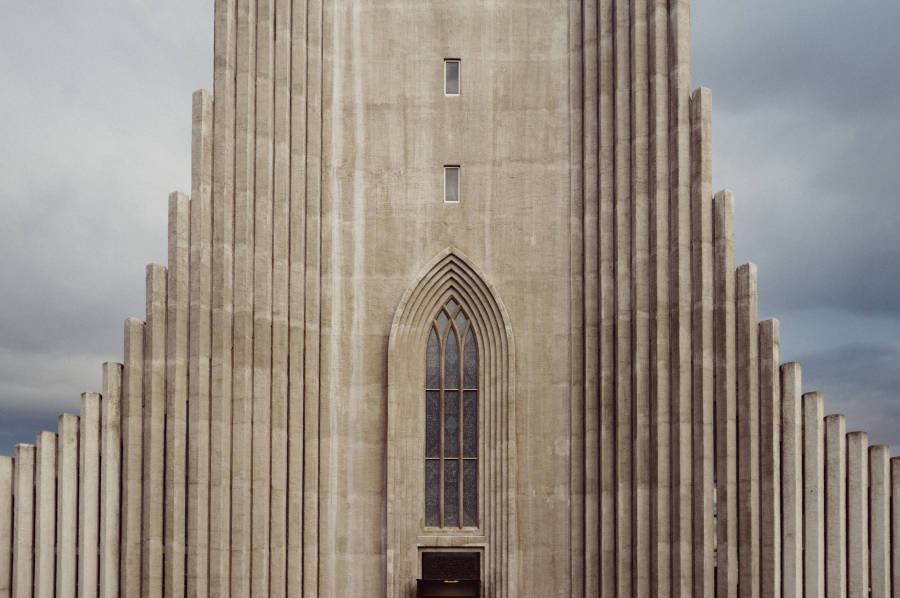Hallgrímskirkja church is weird, rugged and totally Iceland.

Iceland is known for its natural landscapes, and apparently the same can be said for its churches. Visible for over twelve miles, the tower of Hallgrímskirkja rises out of the center of the Icelandic capital of Reykjavík like a concrete geyser. Even before construction concluded in 1986, this Lutheran church had become the city’s most iconic building, an austere and otherworldly example of modern religious art.
Lutherans are known for preferring plain to pomp, but this church throws that ethos out the window.
Though Architectural Digest recently listed Hallgrímskirkja (pronounced hatl-krims-kirk-ya) as one of the world’s most beautiful religious buildings, many have called the church an eyesore since its nearly 250-foot tall tower was first raised in the 1940s and 1950s.
Some have connected this Reykjavík church to the Brutalist movement of the mid 20th century but architect Guðjón Samúelsson submitted his design for the church in 1937 before the rise of Brutalism.
Samúelsson was the State Architect of Iceland in the early 20th century, and he saw this project as an opportunity to develop an inherently Icelandic aesthetic. To Samúelsson, the hexagonal concrete columns that seem to resemble an organ’s pipes were meant to evoke the cascading form of cooling lava.

Unfortunately, the architect who conceived of this grandiose chapel died before it was completed. Hallgrímskirkja, which is named after famous Icelandic pastor and poet Hallgrímur Pétursson, took 41 years to complete.
Hallgrímskirkja’s organ, the only bright jewel in the church’s bleak interior, was installed six years later in 1992. This incredible instrument built by the German artisan Johannes Klais is nearly 50 feet tall, weighs around 25 tons, and has more than 5,000 bellowing pipes. The church holds weekly services where devout and casual visitors can hear the organ being played, and each summer the church hosts an international festival of organ music.

Source: Flickr.com

Source: Flickr.com
Visitors can also take the elevator to the top of the bell-tower and look out over the capital from the country’s second-tallest building. The three bells there represent Reverend Hallgrímur Pétursson, for whom the building is named, as well as his wife and daughter. Ironically, the large clock on the tower, the most visible timepiece in town, often gives the wrong time, as gusts of Icelandic wind frequently knock the hands out of step.
The church’s front courtyard boasts a statue of Leif Erikson, the Norse voyager. Erikson was likely the first European explorer to land in North America, beating Columbus to the “new world” by nearly 500 years. In the statue in front of Hallgrímskirkja, Erikson strides confidently forward, axe in hand, a metallic cape fluttering behind him. The statue was a gift from the United States in 1930 to honor the thousand-year history of the Icelandic parliament.

Even in its austerity, Hallgrímskirkja church is one of the world’s most dramatic houses of worship. Iceland is famous for its rugged natural landscapes, and this strange church echoes the harsh environment that surrounds it. It is, just as Guðjón Samúelsson wanted, a truly Icelandic edifice.





